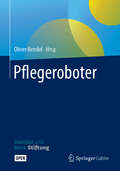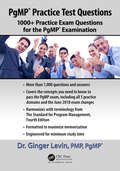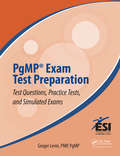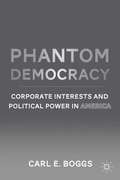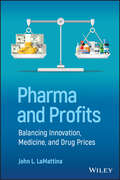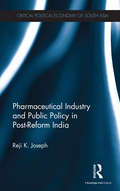- Table View
- List View
Pfizer and AstraZeneca: Marketing an Acquisition (A)
by James Weber John A. QuelchIn 2014, Pfizer proposed a friendly acquisition of AstraZeneca, but the AstraZeneca board resisted over price and strategy concerns. Was this good for pharmaceutical consumers? Pfizer, like pharmaceutical companies in general, faced difficulties in growing sales due to the challenges of developing new drugs. Over the previous decade or more, Pfizer had pursued acquisitions as a way to acquire new drugs, increase sales, and to reduce costs by combining operations and cutting staff. Pfizer, a U.S. company, was also interested in AstraZeneca, a U.K. company, as a way to reduce its corporate taxes. In recent years, AstraZeneca had significantly strengthened its pipeline of potential new drugs and its board felt it was in a strong position to go it alone. The company's CEO also indicated that an acquisition would be disruptive to its drug development efforts and delay new drugs coming to market. U.K. politicians expressed concerns over downsizing and job losses in the economically important pharmaceutical sector. The case allows readers to explore who benefits from a potential acquisition (shareholders, employees, drug consumers) and which of these stakeholders should be considered when deciding on an acquisition.
Pfizer and AstraZeneca: Marketing an Acquisition (B)
by James Weber John A. QuelchThis (B) case provides a brief description of the outcome of the (A) case.
Pfizer's Centers for Therapeutic Innovation (CTI)
by James Weber Gary P. Pisano Kaitlyn SzydlowskiIn 2010, Pfizer established four small research units in New York, Boston, San Francisco, and San Diego located close to several premier Academic Medical Centers (AMCs), or hospitals with adjoining medical schools. The goal of these units was to redesign collaboration with Pfizer and academic medical researchers with the purpose of developing new, innovative drugs candidates for testing in patients. Project teams consisted of Pfizer scientists and academics working side-by-side to reduce the time needed to bring a therapeutic drug from the lab to a patient's bedside. This case explores the academic collaboration model developed by Pfizer. What were the strengths of and challenges facing this model? How would the model evolve in the future? And how would new, similar collaboration models surfacing at other major pharmaceutical companies pose a threat to the Pfizer model?
Pfizer's Virtual CIO (Abridged)
by F. Warren Mcfarlan Brian J. DelaceyDiscusses the IT organization and IT strategy issues facing Pfizer, one of the world's largest pharmaceutical companies. Managing over $1 billion of IT expense, the company has a committee approach for handling all critical IT decisions, an approach that is consistent with the internal culture of Pfizer in other aspects.
Pfizer: Global Protection of Intellectual Property
by Michael A. Santoro Lynn Sharp PaineTop officials at Pfizer are assessing their strategy for improving protection of Pfizer's patents around the world. The outcome of the Uruguay Round of the GATT negotiations is uncertain, and it is not clear whether an acceptable intellectual property protection agreement will emerge. The case describes how Pfizer helped transform intellectual property from a lawyer's specialty to an international trade issue of concern around the world through close cooperation with the U.S. government, leadership in forming a tripartite coalition among U.S., Japanese, and European industry, and mobilization of the Pfizer organization. Shows how far a company may go to protect its intellectual property in a world where the concept of intellectual property is not universally recognized or accepted. May also be used to discuss the effectiveness and legitimacy of Pfizer's strategy, the conflicts between industrialized country and developing country perspectives on international trade and national sovereignty, and the question of appropriate norms of intellectual property protection.
Pfizer: Global Protection of Intellectual Property
by Michael A. Santoro Lynn Sharp PaineTop officials at Pfizer are assessing their strategy for improving protection of Pfizer's patents around the world. The outcome of the Uruguay Round of the GATT negotiations is uncertain, and it is not clear whether an acceptable intellectual property protection agreement will emerge. The case describes how Pfizer helped transform intellectual property from a lawyer's specialty to an international trade issue of concern around the world through close cooperation with the U.S. government, leadership in forming a tripartite coalition among U.S., Japanese, and European industry, and mobilization of the Pfizer organization. Shows how far a company may go to protect its intellectual property in a world where the concept of intellectual property is not universally recognized or accepted. May also be used to discuss the effectiveness and legitimacy of Pfizer's strategy, the conflicts between industrialized country and developing country perspectives on international trade and national sovereignty, and the question of appropriate norms of intellectual property protection.
Pfizer: Letter from the Chairman (A)
by Natalie Kindred Robert L. SimonsThis case explores maximizing shareholder value as a goal in executive decision making. Over a period of nine years, three different Pfizer CEOs make critical decisions intended to increase shareholder value. But the results are disappointing. To allow students to examine these decisions, the case provides excerpts from four Chairman's letters to shareholders from Pfizer's annual reports, followed by a description of the circumstances behind each letter. In the 2000 annual report, then-CEO Bill Steere discusses Pfizer's rise to industry prominence with the acquisition of Warner-Lambert. In the 2003 report, new CEO Hank McKinnell discusses Pfizer's performance goals and its acquisition of Pharmacia, which gave it control of anti-arthritis drug Celebrex. In the 2005 report, McKinnell discusses his decision to keep Celebrex on the market despite health risks. In the 2006 report, new CEO Jeff Kindler barely mentions McKinnell's (controversial) early retirement and describes efforts to reform the company. The case closes in February 2009, just after Pfizer announces plans to acquire competitor Wyeth. Since 2000, Pfizer's tremendous growth in assets through acquisitions has not translated into significant growth in net income or share price. In closing, students are asked what Kindler should write in the letter to shareholders to open Pfizer's 2008 annual report.
Pflege im Wandel gestalten – Eine Führungsaufgabe: Lösungsansätze, Strategien, Chancen
by Peter Bechtel Ingrid Smerdka-Arhelger Kathrin LippDas Buch ist ein Führungskompass für Leitende in Gesundheitseinrichtungen, die ihr Team aktiv in Veränderungsprozessen begleiten möchten. Namhafte Experten beschreiben die Herausforderungen, die auf Einrichtungen der Kranken- und Altenpflege zukommen, erläutern Lösungsansätze und wagen einen Ausblick in die Zukunft. Ziel ist es, die Einrichtungen zukunftssicher zu machen, und den Leitungskräften Handwerkszeug zu liefern, mit den neuen Herausforderungen umzugehen. Dabei bilden die 3 wichtigsten Veränderungsfaktoren Prozesssteuerung, Fachpersonal und Demografie den roten Faden des Buches.Erläutert werden Fragen wie: Mitarbeiter 50+ - Wie nutze und fördere ich das Potenzial dieser Ressource?, Mitarbeiterzufriedenheit - Wie binde ich Mitarbeiter an meine Einrichtung?, Nachwuchsmangel – Wie wird meine Einrichtung zum Magnet?, Lebenslanges Lernen – Fachliche Kompetenz schulen und eine positive Haltung im Berufsfeld Pflege entwickeln, Zu gesund für‘s Krankenhaus, zu krank für zu Hause – Wie können Versorgungsstrukturen verbessert werden? Best Practice-Konzepte von Kliniken und Pflegeeinrichtungen sowie ein Blick in andere europäische Länder geben Beispiele, wie der Wandel positiv für neue Ansätze genutzt wird.Für Krankenhausmanager, Pflegedirektoren, Pflegedienst- und Stationsleitungen, Qualitätsmanager in Krankenhäusern und Altenpflegeeinrichtungen, die ihr Team sicher in die Zukunft navigieren möchten.
Pflegeeinrichtungen erfolgreich führen: Organisationskultur zwischen Marktorientierung und Berufsethik
by Heinrich BolzDas Buch stellt den Erfolgsfaktor der marktorientierten Organisationskultur für Pflegeeinrichtung in den Mittelpunkt der Betrachtung. Die wesentlichen inhaltlichen und methodischen Grundlagen zur Organisationskultur und zum Changemanagement werden verständlich aufbereitet. Die Bearbeitung des Themas verknüpft wissenschaftlich fundierte Grundlagen und Erkenntnisse zur Organisationskultur mit praxisnahen Bezügen und Beispielen aus dem Pflegealltag. Es wird konkrete Hilfestellung für eine Selbstreflexion und Erfassung der bestehenden Organisationskultur gegeben.
Pflegeinnovationen in der Praxis: Erfahrungen und Empfehlungen aus dem „Cluster Zukunft der Pflege“
by Heinz Rothgang Stefan Walzer Tobias Krick Jürgen Zerth Ronny Klawunn Tobias KleyPflegeinnovationen - insbesondere in Verbindung mit Digitalisierung und den Potenzialen von KI - werden als wesentlicher Hebel gesehen, um sowohl die Qualität in der Pflege anzuheben als auch den wachsenden Herausforderungen des Fachkräftemangels zu begegnen. Die Frage, welche Faktoren die Entwicklung, Auswahl und Implementierung von Pflegetechnologien befördern oder auch behindern können, ist die Aufgabe des vom Bundesministerium für Bildung und Forschung (BMBF) geförderten „Cluster Zukunft der Pflege“. Dabei wird das gesamte soziotechnische System Pflege (Mensch, Organisation und Technik), in dem die Technik zum Einsatz kommen soll, betrachtet.An Beispielen aus dem Pflegeinnovationszentrum (PIZ) und aus vier Pflegepraxiszentren (PPZ) werden in diesem Buch die Phasen des Technologieentwicklungsprozesses und der Implementierung von Pflegeinnovationen in diversen pflegerischen Settings des praktischen Pflegealltags vorgestellt, die Fragen nach sozialer, ethischer und ökonomischer Relevanz sowie die Bedeutung des praktischen Nutzens sowie der Akzeptanz gestellt und diskutiert. Zugleich werden Bedingungsfaktoren für gelingende Pflegeinnovationen analysiert, damit sich der pflegerische Nutzen der Pflegebedürftigen und der Nutzen der Pflegenden verbessern lassen. Kurz: Ein profunder Einblick in die Werkstatt „Zukunft der Pflege“ mit zahlreichen praxisorientieren Erkenntnissen für den Einsatz von digitalen Innovationen im Pflegealltag und Hinweisen für den weiteren Entwicklungs- und Forschungsbedarf.
Pflegemanagement und Innovation in der Pflege: Wie sich Mensch und Maschine sinnvoll ergänzen (FOM-Edition)
by David Matusiewicz Gerald LuxDie Pflegebranche in Deutschland ist im Umbruch – sie muss dem zunehmenden Fachkräftemangel etwas entgegensetzen und zugleich als eine der Zukunftsbranchen die Potenziale der Technisierung und Digitalisierung heben.Dieses Buch erfasst und analysiert die derzeitigen Trends und Herausforderungen sowohl im Bereich der praktischen Pflege als auch auf der Ebene des Pflegemanagements auf allen Führungsebenen. Die Autoren der 30 wissenschaftlichen Beiträge zeigen, wie politische Entscheider, die Organe der Selbstverwaltung und die einzelnen Unternehmen durch unterschiedliche Maßnahmen den Problemen der Pflegebranche entgegenwirken können. Es werden eine Reihe von Handlungsmöglichkeiten und Entwicklungsperspektiven für die unterschiedlichen Akteure der Pflegebranche aufgezeigt, bei denen sich der Faktor Mensch und der Faktor Maschine sinnvoll ergänzen können. Auch werden Pflegekonzepte mit in den Blick genommen, die bisher weniger bekannt sind. Ebenso werden innovative Ansätze von Start-ups und sozialen Entrepreneuren in der Pflege präsentiert.Nicht zuletzt die Corona-Pandemie hat gezeigt, dass die Pflege eine zentrale, systemrelevante Stütze im Gesundheitswesen in Deutschland darstellt. Die jüngsten Reformen in der Pflegepolitik sind Ausdruck davon und zeigen, dass sich Entscheider auf allen Ebenen und in allen Bereichen der Pflege mit den drängenden Fragen auseinandersetzen müssen. Dazu liefert dieses Buch wichtige Impulse und Anregungen.
Pflegeroboter
by Oliver BendelDieses Open-Access-Buch bündelt technische, wirtschaftliche, medizinische und ethische Reflexionen über Pflegeroboter. Pflegeroboter, im Moment noch mehrheitlich Prototypen, unterstützen oder ersetzen menschliche Pflegekräfte bzw. Betreuer. Sie bringen Kranken und Alten die benötigten Medikamente und Nahrungsmittel, helfen beim Hinlegen und Aufrichten oder alarmieren den Notdienst. Vorteile von Pflegerobotern sind durchgehende Verwendbarkeit und gleichbleibende Qualität der Dienstleistung. Nachteile sind Kostenintensität (bei möglicher Amortisation) und Komplexität der Anforderungen. Unter der wissenschaftlichen Leitung von Prof. Dr. Oliver Bendel trafen sich im September 2017 Vertreter verschiedener wissenschaftlicher Disziplinen im Rahmen eines Ladenburger Diskurses der Daimler und Benz Stiftung, um über den aktuellen und künftigen Einsatz von Pflegerobotern zu sprechen und Forschungspotenziale zu identifizieren. Die Autoren gehen in ihren Beiträgen auch Fragen aus Wirtschafts-, Medizin- und Informationsethik nach: Wer trägt die Verantwortung bei einer fehlerhaften Betreuung und Versorgung durch die Maschine? Inwieweit kann diese die persönliche und informationelle Autonomie des Patienten unterstützen oder gefährden? Ist der Roboter eine Entlastung oder ein Konkurrent für Pflegekräfte? Antworten müssen von Wissenschaft und Gesellschaft gefunden werden.
PgMP Exam Challenge! (ESI International Project Management Series #17)
by Ginger Levin PMP PgMP J. LeRoy Ward PMP PgMPUp to date with the third edition of PMI's Program Management Standard, The PgMP Exam Challenge! contains more than 300 practice questions to help readers hone their knowledge and test their skills. It covers all five of the program management domains: Strategic Program Management, Program Management Life Cycle, Benefits Management, Stakeholder Management, and Governance. It also examines all of the sub domains of the lifecycle domain. With an easy-to-use format, this is an ideal resource for those preparing to take the PgMP exam.
PgMP Exam Practice Test and Study Guide (ESI International Project Management Series)
by Ginger Levin J. LeRoy WardUp to date with the third edition of PMI's Standard for Program Management, this is the most comprehensive resource available to help prepare readers for the PgMP Exam. Updated with new and changed terminology, this edition incorporates the concepts from the five performance domains. The book features practical study hints, a list of major topics covered on the exam, and a bibliographic reference for further study. The two challenging, 170-question practice tests are available in the book and online so readers can retake the practice tests as many times necessary.
PgMP Practice Test Questions: 1000+ Practice Exam Questions for the PgMP Examination
by Ginger LevinUp to date with the fourth edition of PMI’s Program Management Standard, PgMP® Practice Test Questions: 1000+ Practice Exam Questions for the PgMP® Examination contains more than 1,000 practice questions to help readers hone their knowledge and test their skills. It covers all five of the program management domains: Strategic Program Management, Program Management Life Cycle, Benefits Management, Stakeholder Management, and Governance. It also examines all of the sub domains of the lifecycle domain. With an easy-to-use format, this is an ideal resource for those preparing to take the PgMP® exam.
PgMP® Exam Test Preparation: Test Questions, Practice Tests, and Simulated Exams (Best Practices in Portfolio, Program, and Project Management)
by Pmp Ginger Levin PgMPIn addition to test questions in each of the five domains and two practice tests in print and online, this all-in-one study guide also contains flashcards for learning terms. This book is current with The Standard for Program Management, Fourth Edition, and its author is the second person in the world to have earned the PgMP® certification. The online versions of the practice test simulate taking the actual exams and provide scoring as above target, target, below target, or needs improvement. Answers come with explanations and references. Questions are written to improve reading skills and teach how to select the best answer, which are key to passing the exam.
PhDone: A Professional Dissertation Editor's Guide to Writing Your Doctoral Thesis and Earning Your PhD
by Kevin Anderson Dr. Allen Roda Dr. Lauren SaundersEverything you need to finally finish your doctorate Based on decades of experience working with thousands of doctoral candidates at Dissertation Editor, Dr. Allen Roda and Dr. Lauren Saunders deliver a comprehensive yet accessible guide filled with practical advice, illuminating stories, and hard-earned wisdom that will empower you to complete your dissertation and earn your degree. Breaking down the doctoral journey step-by-step, offering invaluable tips and resources along the way, PhDone is an essential tool for any doctoral candidate. Dr. Roda and Dr. Saunders demystify what a successful dissertation entails, detailing how to formulate your abstract, write your introduction, research your topic, and build a literature review. In PhDone, you&’ll also learn how to: Choose and construct your methodology (qualitative, quantitative, or mixed methods) Develop research questions, conduct research, and obtain IRB approval Properly analyze results and formulate conclusions Master the process of revising, editing, and formatting Nail your defense and earn final approval In addition to outlining the technical components of a dissertation, PhDone provides recommendations for maintaining a schedule, establishing a productive workspace, and cultivating a work-life balance—integral to a successful PhD journey. Dr. Roda and Dr. Saunders share anecdotes and guidance on the many hurdles doctoral candidates face beyond writing the dissertation itself, including how to navigate dissertation committees, the potentially challenging advisor-advisee relationship, and more. Wherever you are in your doctoral journey, Dr. Roda and Dr. Saunders offer you the tools you need to conquer academia&’s biggest challenge and get PhDone.
Phantom Democracy
by Carl BoggsBoggs explores the evolution of concentrated corporate and military power through American history andits impact on our democracy. The events of 9/11 and their aftermath have only deepened the trend toward ever-more concentrated forms of power in a society that ostensibly embraces democratic values. Such developments, Boggs argues, have deep origins in American history going back to the founding documents, ideological precepts of the Constitution, early oligarchic rule, slavery, the Indian wars, and westward colonial expansion. "
PharmAccess and the M-TIBA Platform: Leveraging Digital Technology in the Developing World
by Kevin Schulman Anant Vasudevan Sashidaran MoodleyPharmAccess is an Amsterdam based NGO working to support the development of the private health care market in Africa. This work is critical as over 50% of care is delivered through the private sector, but well-intentioned efforts to address global health through the public sector have the unintended consequence of crowding-out capital formation in the private sector. PharmaAccess is working to crowd-in funding instead through the development of a three-pronged effort in Kenya. They are working to address supply through efforts to improve the quality of health care facilities through education and through a micro-lending program. At the same time, they are working to address demand through the development of the M-TIBA mobile health wallet. The critical question for this case is whether these efforts, in essence the development of a novel platform simultaneously addressing supply and demand, will be enough to change the dynamics of the private health care market. The case provides a background on private health care in Africa and in Kenya.
Pharma and Profits: Balancing Innovation, Medicine, and Drug Prices
by John L. LaMattinaHigh-level commentary on various facets of the pharmaceutical industry from a key leader in the field This book clearly explains the value that the pharmaceutical industry offers to society which is often underreported against the more negative topic of high drug prices. It also offers an overview for drug discovery and development professionals, highlighting the challenges that such drug hunters should be aware of when developing new drugs. Case studies to illustrate topics like hepatitis C, mRNA vaccines, insulin, and price controls are included to aid in seamless reader comprehension. Written by John LaMattina, former president of Pfizer Global Research and Development and well-known speaker and writer for the pharma industry, sample topics covered and questions explored within the work include: Fiscal consequences of curing hepatitis C mRNA vaccines and the race for a cure Why the government does not deserve a piece of Biopharma’s profits Paying for drugs whose ultimate value is unknown The impact of reduced revenues on R&DThis book is a must-read for biopharmaceutical professionals and executives who wish to gain high-level insight into key challenges that must be first understood, then overcome, within the pharmaceutical industry.
Pharma, Prices and Power: Reshaping Pharmaceutical Pricing Negotiations for a Healthier Future (Future of Business and Finance)
by Horacio Falcão Rodrigo Gouveia Hervé LamarqueThis book brings a negotiation perspective to healthcare. It opens the hidden box of pricing and reimbursement (P&R) negotiations, showing their huge impact on global healthcare systems and how they could be drastically improved. The authors offer a comprehensive and unique negotiation-based analysis of healthcare systems worldwide, highlighting the historical, structural, and ethical challenges that shape P&R negotiations. From the role of governments and health insurers to the intricate dynamics between healthcare providers and users, the authors examine the forces driving healthcare costs and access. With a unique blend of theoretical expertise and practical experience, the authors propose a paradigm shift toward value-oriented negotiations. They show how to move away from adversarial win-lose tactics to collaborative and transparent negotiations.
Pharma: Greed, Lies, and the Poisoning of America
by Gerald PosnerAward-winning journalist and New York Times bestselling author Gerald Posner traces the heroes and villains of the trillion-dollar-a-year pharmaceutical industry and uncovers how those once entrusted with improving life have often betrayed that ideal to corruption and reckless profiteering—with deadly consequences. Pharmaceutical breakthroughs such as antibiotics and vaccines rank among some of the greatest advancements in human history. Yet exorbitant prices for life-saving drugs, safety recalls affecting tens of millions of Americans, and soaring rates of addiction and overdose on prescription opioids have caused many to lose faith in drug companies. Now, Americans are demanding a national reckoning with a monolithic industry. Pharma introduces brilliant scientists, in-corruptible government regulators, and brave whistleblowers facing off against company executives often blinded by greed. A business that profits from treating ills can create far deadlier problems than it cures. Addictive products are part of the industry&’s DNA, from the days when corner drugstores sold morphine, heroin, and cocaine, to the past two decades of dangerously overprescribed opioids. Pharma also uncovers the real story of the Sacklers, the family that became one of America&’s wealthiest from the success of OxyContin, their blockbuster narcotic painkiller at the center of the opioid crisis. Relying on thousands of pages of government and corporate archives, dozens of hours of interviews with insiders, and previously classified FBI files, Posner exposes the secrets of the Sacklers&’ rise to power—revelations that have long been buried under a byzantine web of interlocking companies with ever-changing names and hidden owners. The unexpected twists and turns of the Sackler family saga are told against the startling chronicle of a powerful industry that sits at the intersection of public health and profits. Pharma reveals how and why American drug companies have put earnings ahead of patients.
Pharmaceutical Industry and Public Policy in Post-reform India (Critical Political Economy of South Asia)
by Reji K. JosephThis book examines the impact of economic reforms in India on the pharmaceutical industry and access to medicines. It traces the changing production and trade pattern of the industry, research and development (R&D) preferences and strategies of Indian pharmaceutical firms, patent system alongside pricing policy measures and their shortcomings. It also analyses the public health financing system in India driven largely by out-of-pocket expenditure — about 60 per cent — and characterised by very high share of medicines in total health expenditure. A masterful insight into a topical area, the work will be indispensable to those working on pharmaceutical industry and public policy. It will be of interest to researchers, scholars, students, and policy-makers of economics, industrial policy, public policy, intellectual property rights and health financing.
Pharmaceutical Industry in 2005
by John R. Wells Elizabeth A. RaabeThe entire pharmaceutical industry faced uncertain times in 2005. Many of the industry's most pressing issues--patent expirations, new drug pipeline development, price pressures, regulatory issues, and political pressures--were long standing. Fundamentally new technologies were changing the way drugs were discovered, developed, and tested, allowing smaller, specialized competitors to enter the industry, compete in new ways, and grow to challenge the majors. Some observers were even questioning whether the blockbuster model on which the industry was based could continue. Blockbuster drugs, with sales of more than $1 billion a year, were becoming increasingly difficult and costly to develop. In this context, and with stock prices depressed, the industry majors were reflecting on their strategies.
Pharmaceutical Industry in the 1990s
by Anita M. Mcgahan Greg Keller John F. McguireDescribes the pharmaceutical industry in the 1990s, with particular emphasis on the mergers between American manufacturers and prescription-benefits managers (PBMs). PBMs are distributors with unprecedented access to information on patient and physician characteristics. Students have an opportunity to analyze the mergers using transactions-cost techniques.





